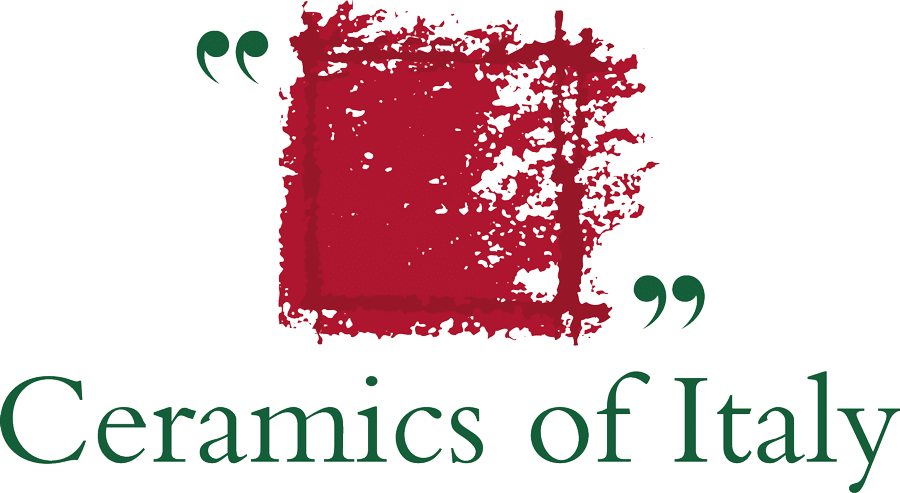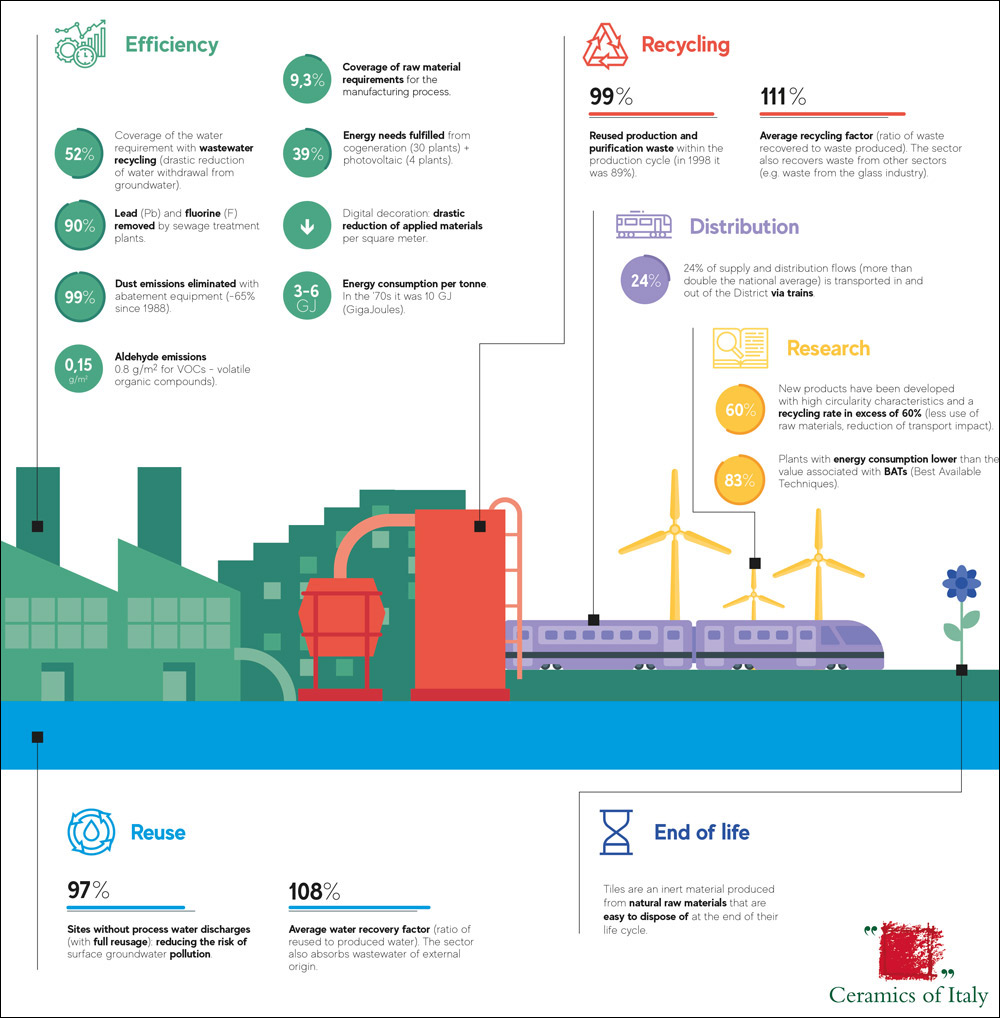The Italian ceramic industry has always been the global benchmark for design, living quality and technological and product innovation in the fields of ceramic tiles and slabs, sanitaryware, tableware and heavy clay. But the truly distinctive feature of Italian companies is their environmental and social sustainability in terms of choice of raw materials, installations, relations with employees and external stakeholders, the manufacturing process and the way in which products are used for different applications. The industry has demonstrated enormous commitment and innovation in its response to the new economic, environmental and social challenges, but there is still considerable room for improvement and greater appreciation on the part of the market, whether this consists of end consumers or design and construction professionals in Italy and abroad.
Ceramics of Italy for Sustainability is the name of a project which aims to determine the Italian ceramic industry’s new sustainability profile in terms of both environmental (product and process) and social aspects (quality of work and community). Promoted by Confindustria Ceramica and organised by Edi.Cer. Spa and Cersaie in collaboration with Focus Lab and with the support of the Italian Trade Agency ITA and the Italian Ministry of Foreign Affairs and International Cooperation, the project set out to investigate and rationalise knowledge of the current trends within the sector and its manufacturing companies, as well as the current and future perception of Ceramics of Italy products and solutions on the part of the market. An in-depth analysis of this kind had never been carried out before in the Italian ceramic industry and it provides a clear call to action for the immediate future: know, inform and promote.
The investigation was conducted in several stages, beginning with an in-depth study of the technical, communication and promotional tools available to the manufacturing and marketing departments of ceramic companies, followed by a process of consultation and engagement with the various key players in the ceramic supply chain, from architects and designers to distributors, retailers, installers and the foodservice and hotel industries in Italy and abroad.
The methodology used was also highly innovative for the Italian and international ceramic industries and involved a process of stakeholder engagement based on online focus groups, surveys and targeted interviews with architects, retailers/distributors and installers working in Italy and in the French, German and English-speaking markets. The aim was to determine the level of knowledge and perception amongst these key professionals of the sustainability of Italian ceramics, the industry’s unique strengths compared to those of its competitors and alternative materials, and the areas of sustainability that need to be developed further in the near future.
This overview of the sector’s positioning and of the various potential interventions will allow the industry to develop a communication and promotion strategy with appropriate content and tools for use both at an institutional level and by Italian ceramic companies and their customers and stakeholders in the various markets. This in turn will help promote awareness of the social and environmental sustainability of the Italian ceramic industry and its products, both at Cersaie and in the various target markets. This factor of excellence will become a hallmark of Italian ceramics and is sure to attract even greater global interest over the coming months.
June 2021
Also see The Italian ceramic industry and the UN 2030 Agenda



 Architects
Architects
 Construction firms
Construction firms


